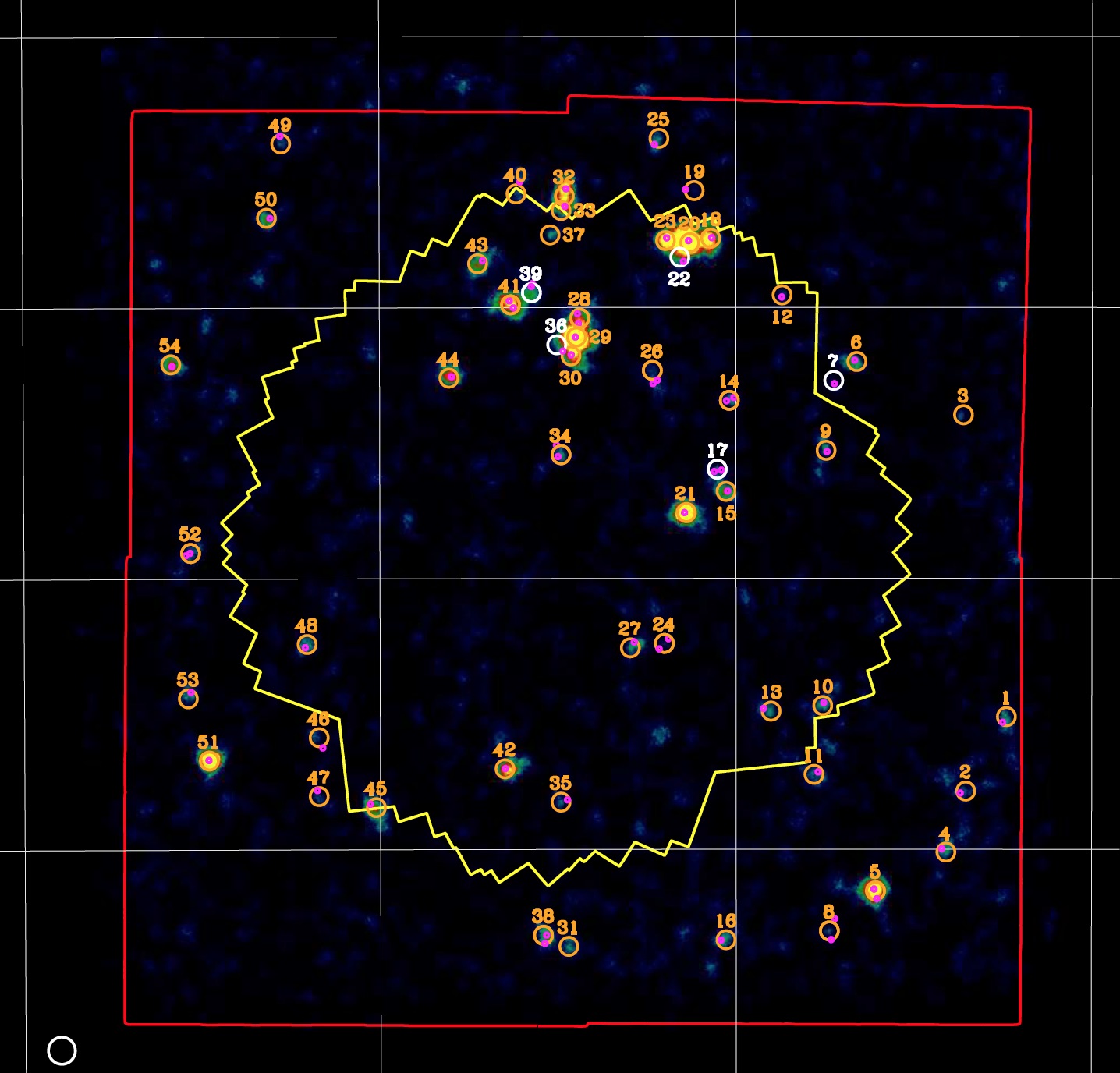AGN and the growth of galaxies
Over the last two decades there has been a seismic shift in our understanding of the role that AGNs (the sites of growing black holes: BHs) have played in shaping how the Universe looks today. Rather than being extreme rare phenomena, AGNs are now believed to have played a fundamental role in shaping how galaxies grow and evolved. Key evidence comes from theoretical models, which require AGNs to inject signicant energy (commonly termed "feedback") via outflows, winds, and jets into the ISM to suppress future star formation (SF) and reproduce the properties of local massive galaxies (e.g., black-hole-spheroid relationships; luminosity functions; IGM metals). In our research we utilise, through three interconnected programmes, new NuSTAR, ALMA, JWST, and VLT-KMOS data in the premier extragalactic survey fields to address the following key questions: i) Does the obscuration of AGN increase with redshift? ii) Do AGN host galaxies downsize in mass? iii) Do AGN suppress star formation? iv) How ubiquitious are large-scale AGN-driven outflows? v) what impact do AGN outflows have on star formation?
 |
| NuSTAR false-positive probability image of the E-CDF-S field. |
NuSTAR and the evolution of AGN and their host galaxies: a key aspect of exploring the role of AGNs in the growth of galaxies is the identification of AGNs even in the most heavily obscured environments. In this research we utilise NuSTAR to identify the AGNs. Launched in June 2012, NuSTAR is the first orbiting observatory with focusing optics at >10 keV, providing a factor ~100x improvement in sensitivity at these energies than previous observatories. The high energy coverage and sensitivity allows for the selection of AGNs even in the presence of large amounts of obscuring gas and dust. Durham has a leading role in the extragalactic survey programme with NuSTAR and is coordinating the deepest and widest survey components. With the NuSTAR extragalactic survey data we will construct a sample of ~1000 NuSTAR-detected AGNs to explore how the obscuration of AGN increases with redshift, utilising the broad high energy coverage of NuSTAR to provide accurate measurements of the amount of absorption as a function of redshift and luminosity, thereby characterising how the environs of accreting BHs evolve. We will also measure the host-galaxy properties of the NuSTAR-detected AGNs to characterise the larger-scale environments that lead to AGN activity. We will use these measurements to search for evidence that the masses of X-ray AGNs "downsize" with redshift, as predicted by theoretical models.
ALMA-JWST and the connection between AGN activity and SF: since AGN activity and SF are both driven by a supply of gas, we would expect a broad connection between these two processes. However, theoretical models imply a more symbiotic connection whereby luminous AGNs regulate SF through "feedback". A basic prediction of these models is that the SF should be more suppressed in galaxies hosting luminous AGNs than in galaxies not hosting luminous AGNs. At Durham we are using the revolutionary ALMA observatory to measure the amount of SF in a large sample of X-ray selected AGNs. With these data we will construct distributions of SF for AGNs and galaxies as a function of luminosity and redshift, taking into account of the dependency of galaxy mass on the measured SF to provide a direct test of the theoretical models. Within the next ~2 years we will also use JWST to explore the connection between AGN activity and SF. JWST is the successor to the highly successful HST and will provide unprecedented resolution and sensitivity at infrared wavelengths. Durham is part of the JWST MIRI team and will use the infrared data to characterise the AGN and SF properties of samples of nearby and distant AGNs using spectroscopic and imaging observations. With these data we will measure the spatial extent of AGN and SF signatures and map the overall AGN and SF radiation field. We will also use deep observations of distant X-ray AGNs to complement the ALMA data and further constrain their SF properties to search for the evidence of suppressed SF in luminous AGNs.
 |
VLT-KMOS, large-scale outflows and their impact on galaxies: it is generally
believed that the connection between AGN activity and SF is forged through
large-scale (>kpc) outflows driven by AGN activity. While there is clear
evidence that some AGN drive outflows (e.g., radio-loud AGN and AGN with
X-ray-UV broad absorption lines on
Staff involved with these projects at Durham include David Alexander, Leah Morabito and Martin Ward.
Contact Details
Centre for Extragalactic Astronomy,Ogden Centre for Fundament Physics - West,
Department of Physics,
Durham University,
South Road,
Durham DH1 3LE
Tel: 44 (0)191 3343635





